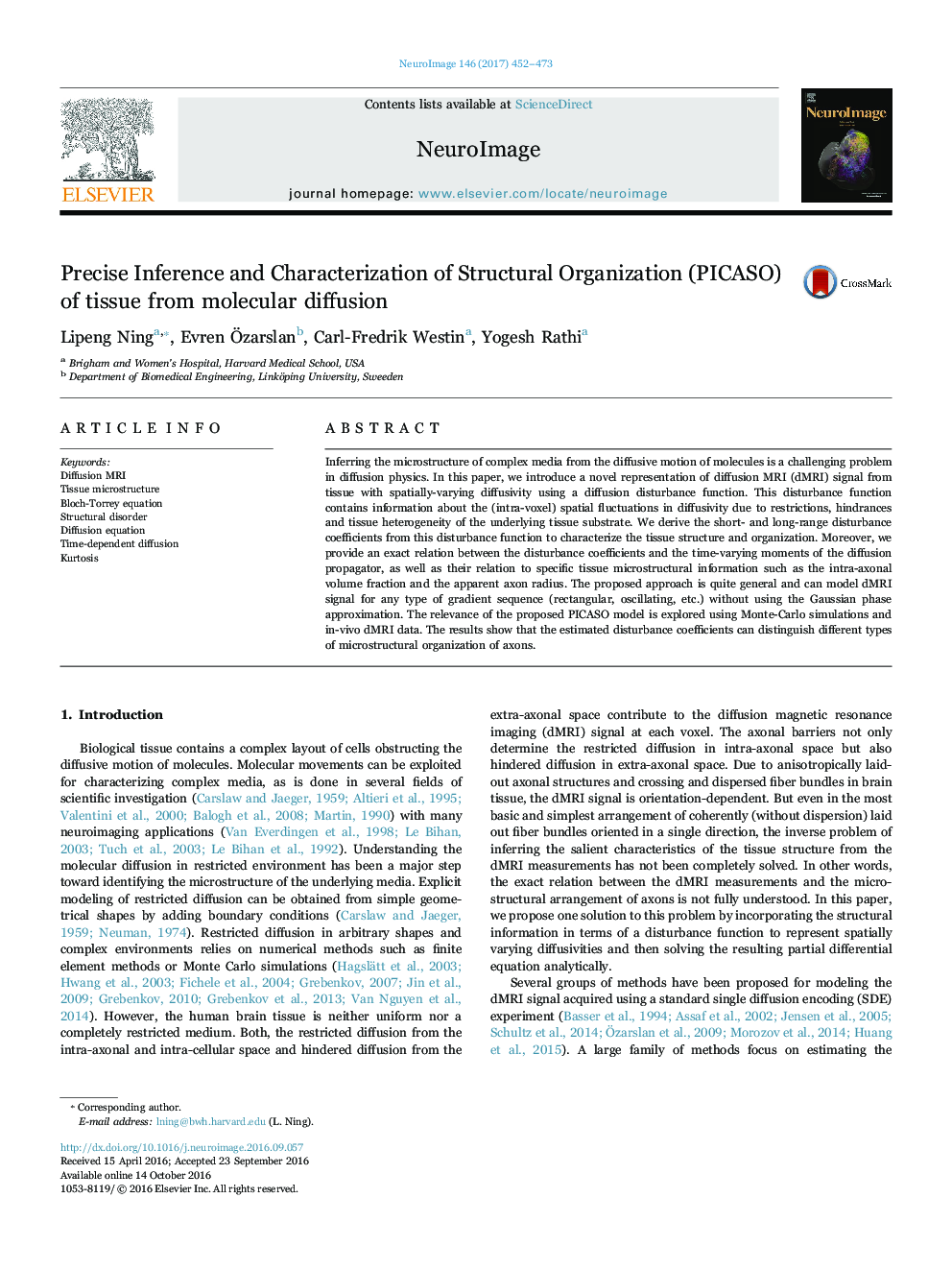| Article ID | Journal | Published Year | Pages | File Type |
|---|---|---|---|---|
| 5631355 | NeuroImage | 2017 | 22 Pages |
â¢We propose a new approach for characterizing tissue microstructure using diffusion MRI that we call PICASO.â¢We introduce a structural disturbance function to represent inhomogeneous tissue structures.â¢We present the relation between the structural disturbance function and the diffusion propagators.â¢The structural disturbance function can be estimated using the diffusion MRI measurements.â¢PICASO is able to distinguish different axonal packing structures using simulations and in-vivo data.
Inferring the microstructure of complex media from the diffusive motion of molecules is a challenging problem in diffusion physics. In this paper, we introduce a novel representation of diffusion MRI (dMRI) signal from tissue with spatially-varying diffusivity using a diffusion disturbance function. This disturbance function contains information about the (intra-voxel) spatial fluctuations in diffusivity due to restrictions, hindrances and tissue heterogeneity of the underlying tissue substrate. We derive the short- and long-range disturbance coefficients from this disturbance function to characterize the tissue structure and organization. Moreover, we provide an exact relation between the disturbance coefficients and the time-varying moments of the diffusion propagator, as well as their relation to specific tissue microstructural information such as the intra-axonal volume fraction and the apparent axon radius. The proposed approach is quite general and can model dMRI signal for any type of gradient sequence (rectangular, oscillating, etc.) without using the Gaussian phase approximation. The relevance of the proposed PICASO model is explored using Monte-Carlo simulations and in-vivo dMRI data. The results show that the estimated disturbance coefficients can distinguish different types of microstructural organization of axons.
